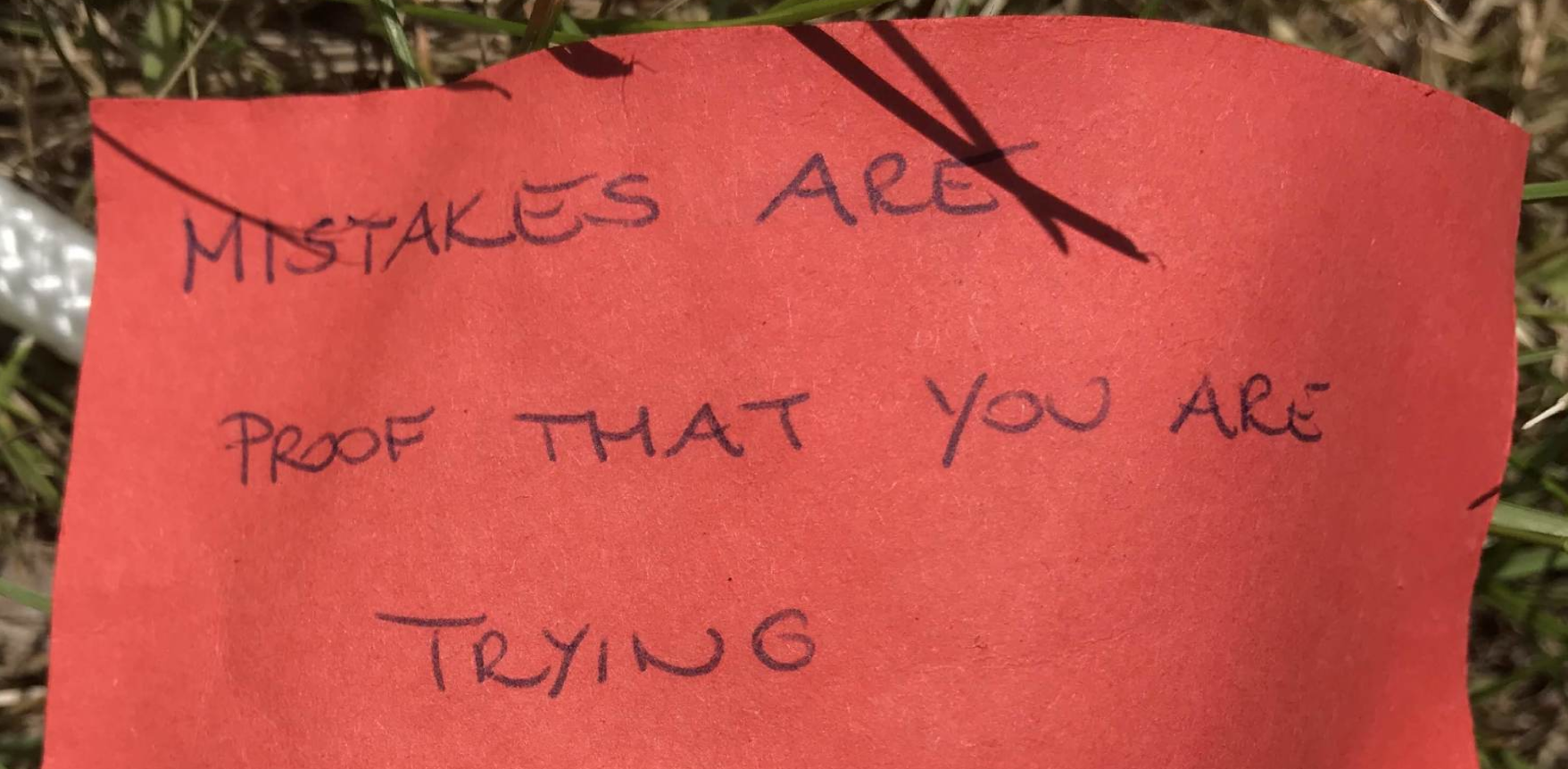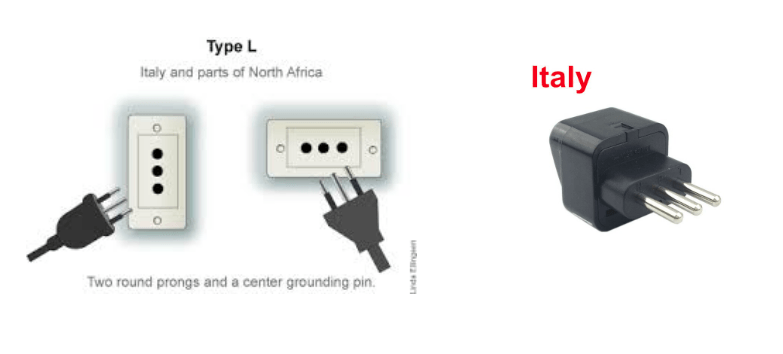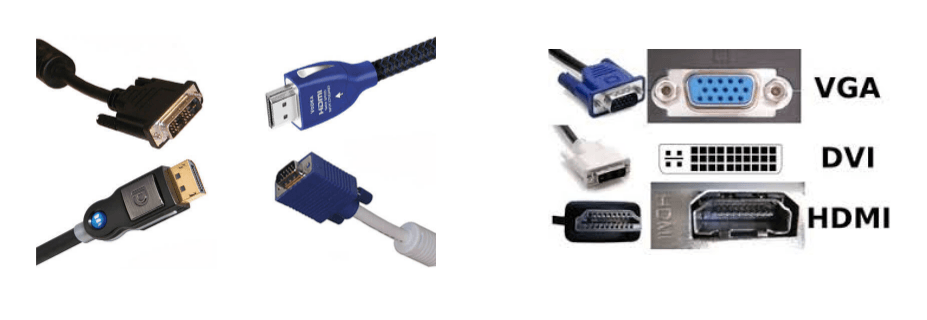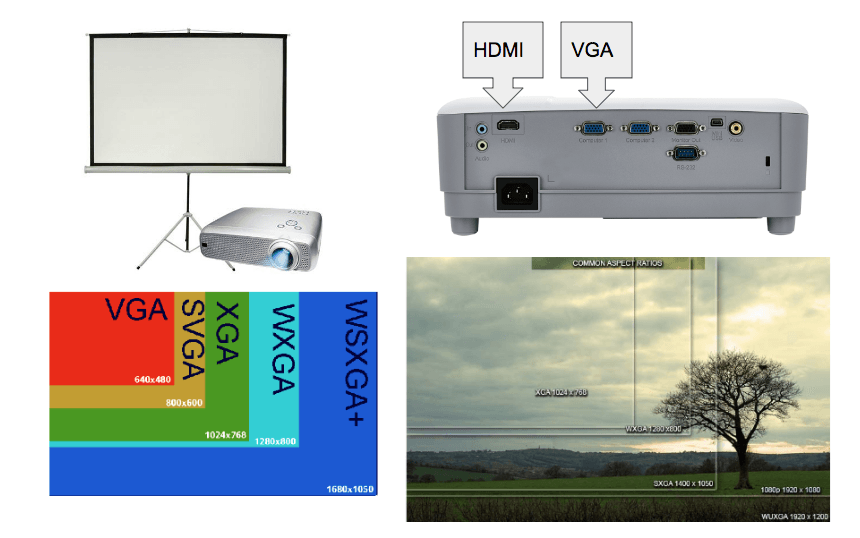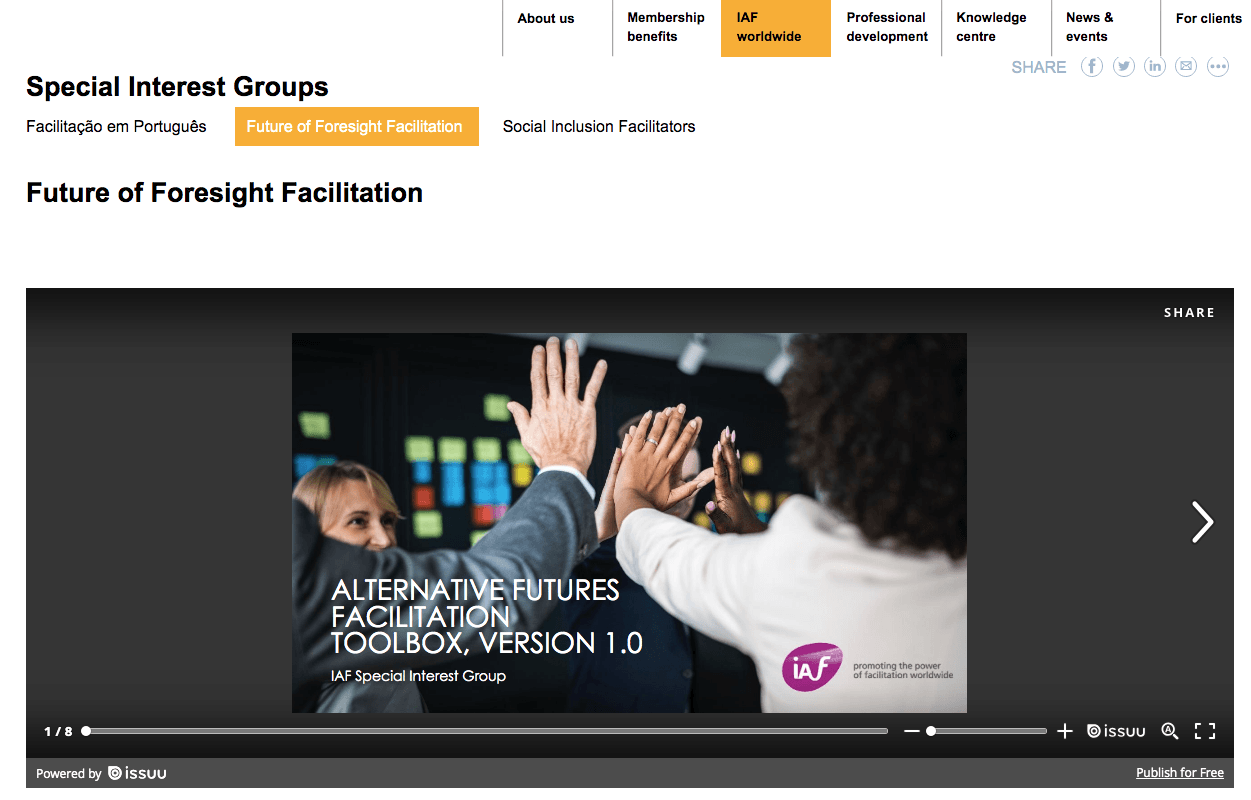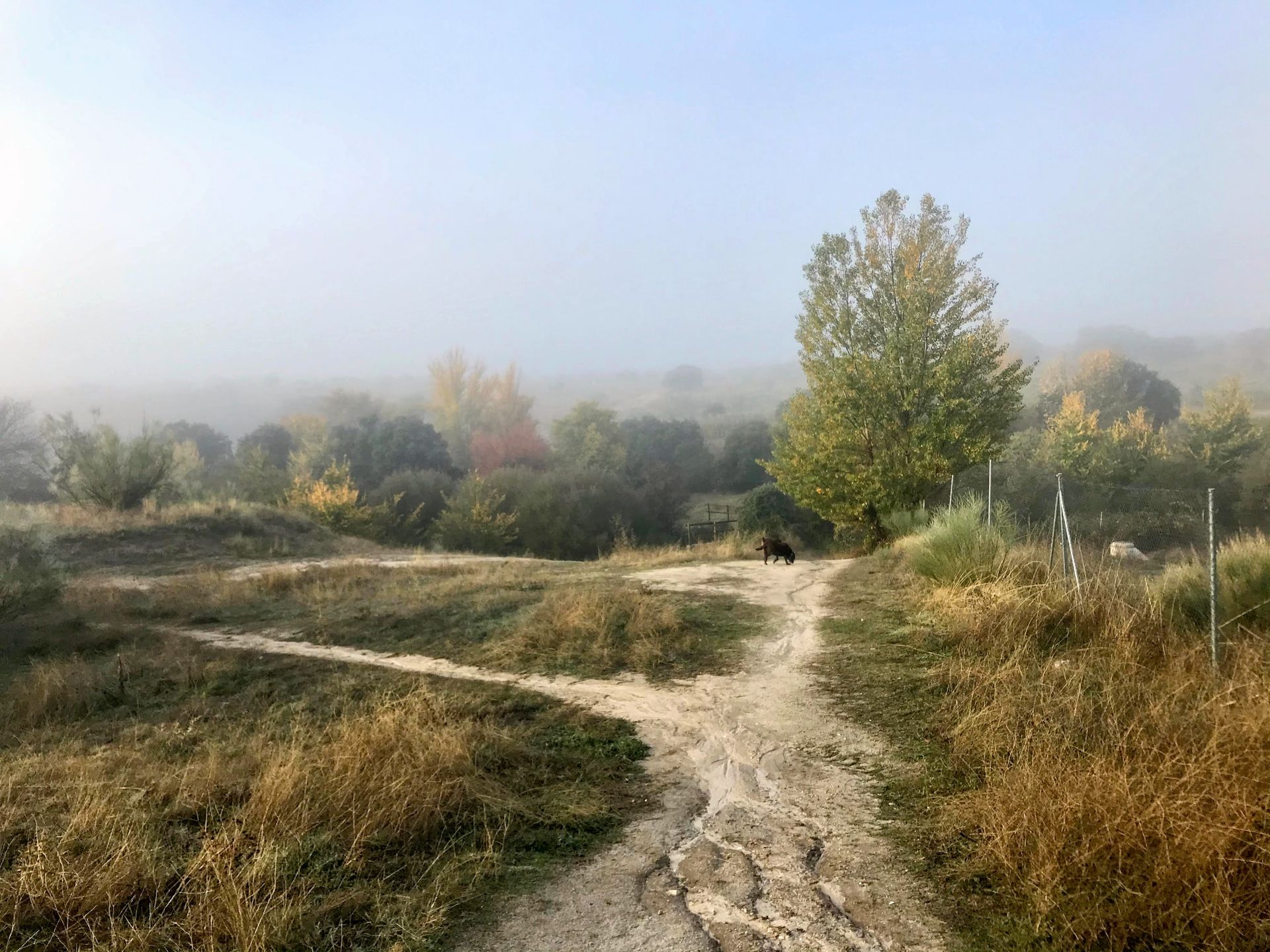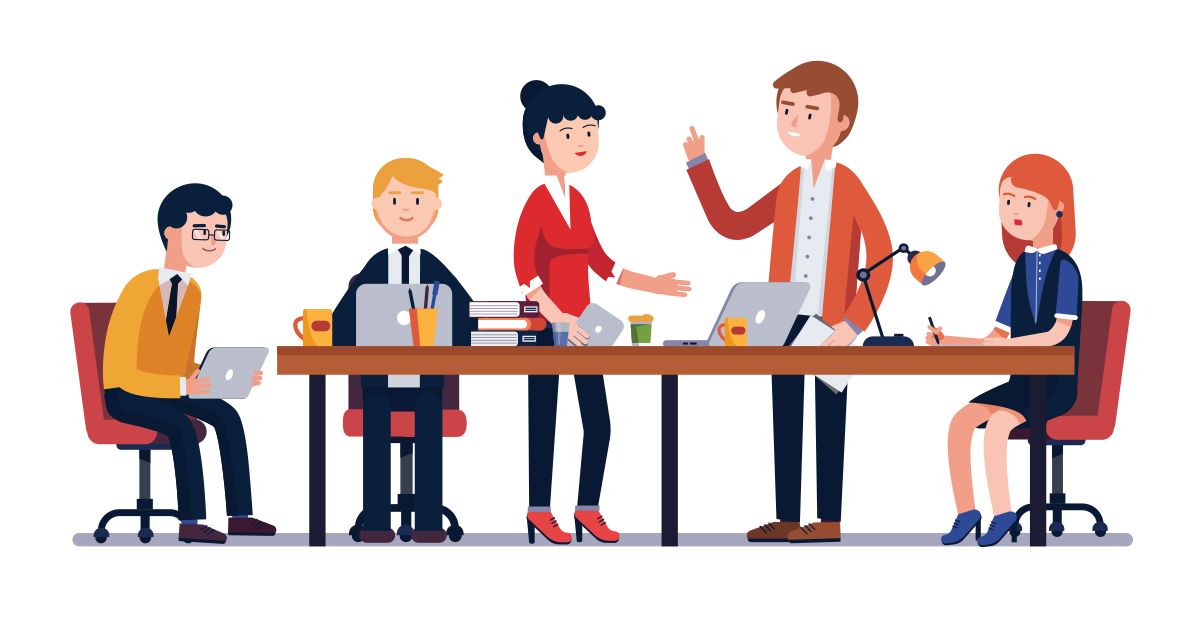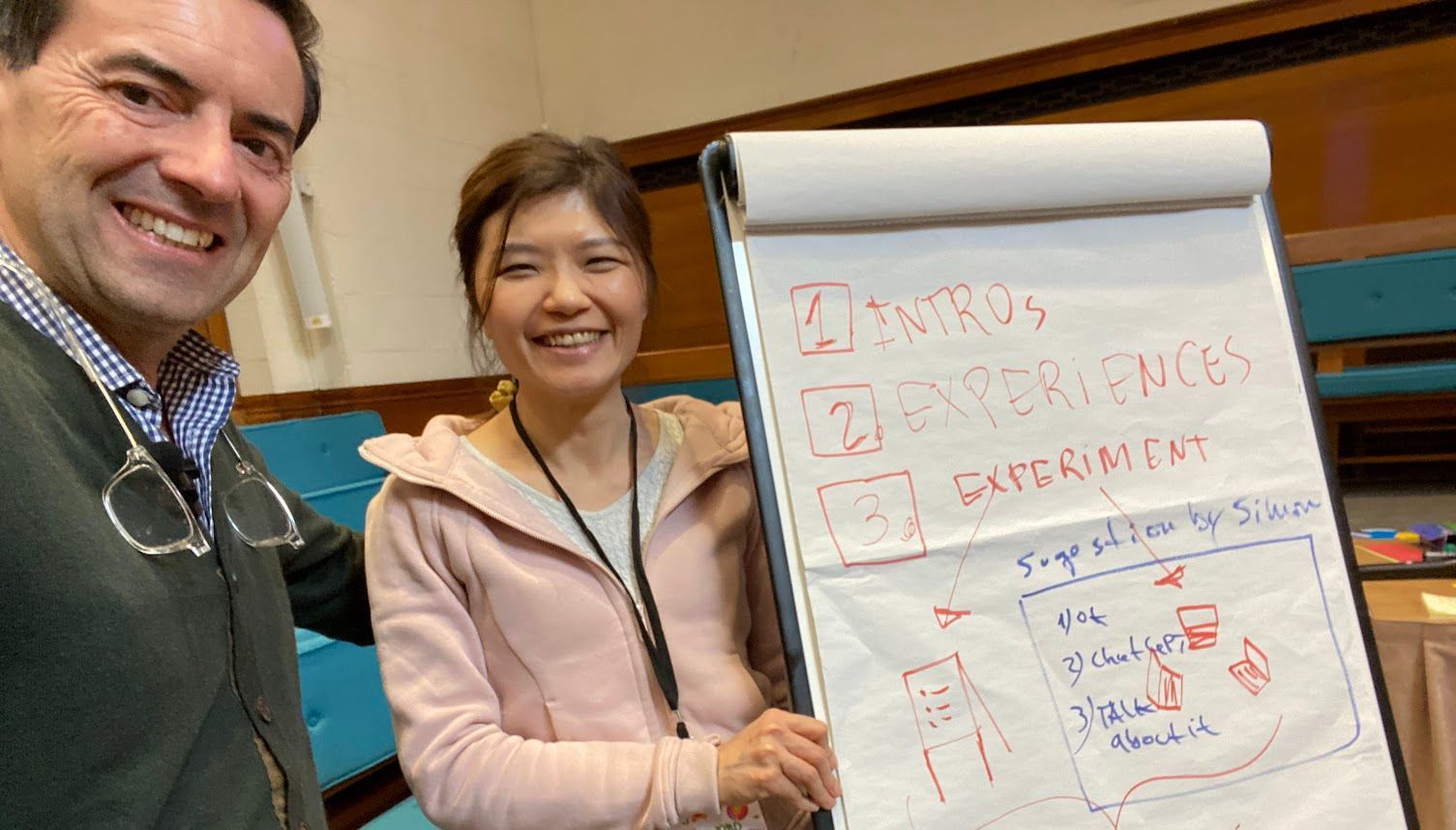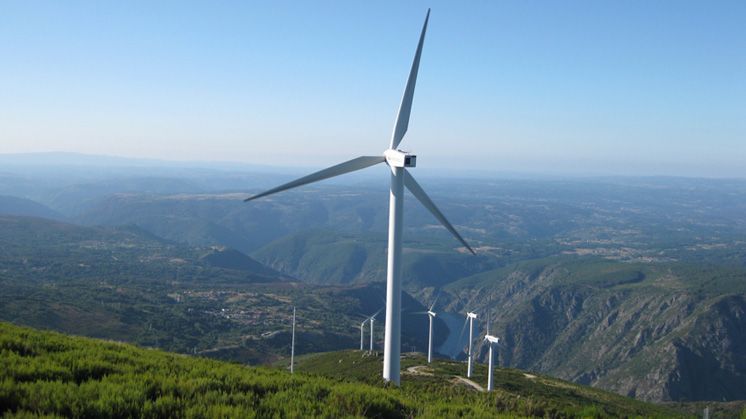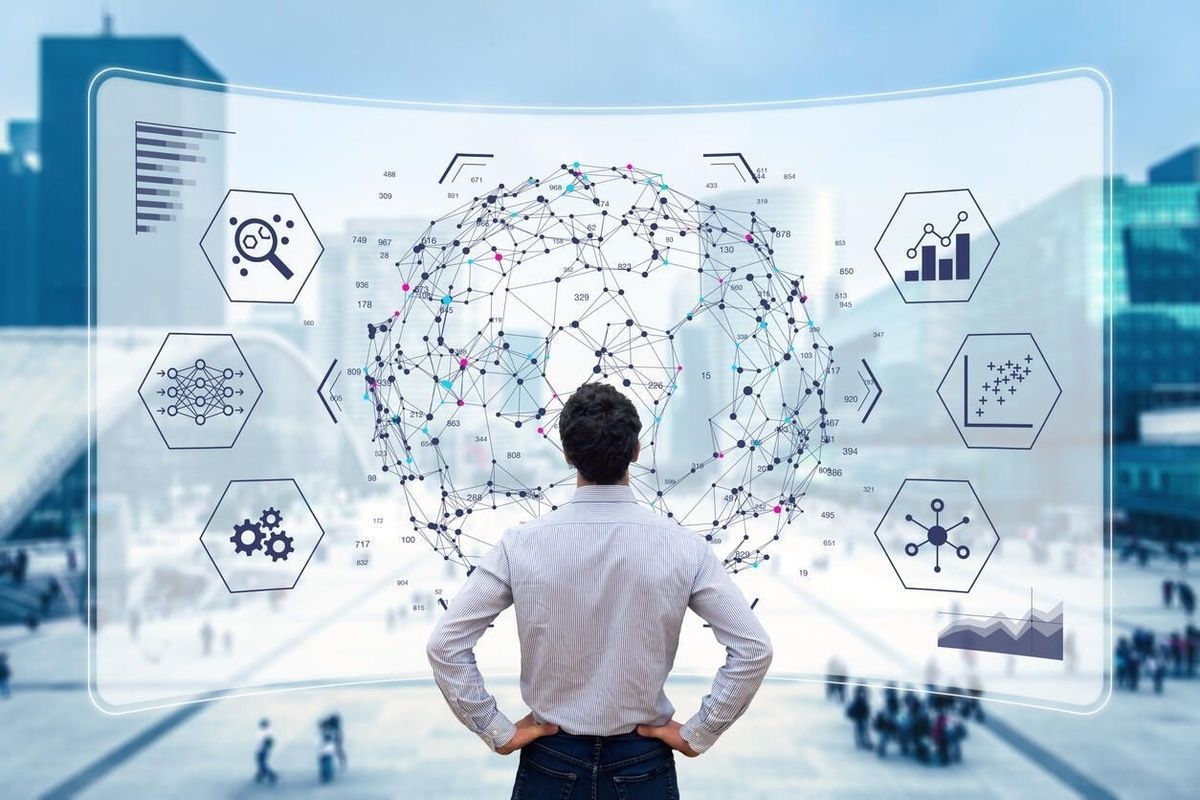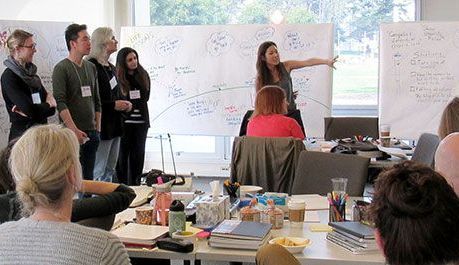Why you should always distrust your own experience
This is a true story. It happened last May in
Milan
when
Erina Possak,
Paolo Martinez
and myself agreed on delivering a workshop on the Future of Foresight Facilitation and Agile, the main theme of this year's IAF (International Association of Facilitators)
Europe and Middle East conference.
Let me describe you step-by-step what happened that day, you will find it hilarious and hopefully also useful to reflect and learn.
In the end, I am also offering an "AV resource kit" in case you need to plan a workshop with digital tools somewhere in the world.
When a compass is better than a smartphone
# Just before our workshop, which was scheduled to start at 11:30, I attended
Pere Juarez’s session thinking it would be finishing at 11:00 so I could have a 30 minutes break before my session. Since I got a confirmation that I would have the projector and everything ready for me just to plug in and do final adjustments this was plenty of time. After all, I am using digital tools since the glorious 90s and I am co-facilitating with Paolo Martinez who is also experienced in digital tools for facilitation, what can possibly go wrong?
# A few minutes past eleven and thanks to a late break, I discovered Pere’s session duration was not for 90 minutes but 180 minutes (!) so I had to urgently depart to my session's room in the Herbarium since I was already late. Well, I thought, a quick run and I will be there in a minute, right?
# I knew the Herbarium was very close to the main building where I was, except that I got lost in the beautiful campus of this old Psychiatric Hospital transformed in a
cultural center
and could not find the main building. I inhaled the fresh air and thought to myself, hmmm I am losing my precious few minutes in advance, but that’s all right I will be just plug and playing my laptop, right? And we had planned the session to 10 minutes late start.
# But then I got really lost at the gardens surrounding the buildings... "where am I?" Luckily, the helpful Italian colleagues of the organizing team were looking for me. They finally found me and quickly got me inside the building. For a moment, I felt like I was a famous politician with a crowd waiting to hear my statements. I was delighted for this rescue, but too stressed to even thank them properly.
Did you know how many different EU countries do not use the EU standards?
# First unexpected surprised (almost pleasant, if not for being almost 15 minutes late) the room was jam packed. To myself: "Oh My God (OMG) our session is much more important than I thought". I expected only just a few people joining our somewhat esoteric and alien topic to an Agile conference. Of course, I had forgotten that Paolo did a magnificent job in the previous opening day to pitch for our SIG and for this workshop so the room was full. I saw deep in Paolo’s eyes how his perfectionist mind was already regretting to have done that.
# Second surprise: "OMG we have a projector and a projection screen in the room but the previous facilitators did not use them so they are unplugged and the screen is miles apart and untested". I thought that the previous session would be leaving me a warm LCD ready to plug and play but that didn’t happen. But this was a conference room improvised in an Herbarium, for Christ sake. Who would expect anyone crazy enough to use a video projector here?
I sensed nervousness in the room and dozens of impatient eyes looking at their watches. Do you know about the saying "the intention to help, inhibits help"? That's what happened when
Aitor Guisasola and other dear friends were eagerly offering to help. "Should we write your agenda on a flipchart?" That was precisely what I had intended to do if arriving 30 minutes earlier, I thought, but right now, I have a room full of people anxious for the show to start.
#Ahahaha, I thought laughing to myself, how useful it would be to have now Paolo to start the session with a warm up activity with plain 'post it' notes as originally planned, but instead, we have decided on the eve to build the warm up activity directly on GroupMap (a digital platform) so that the participants would get acquainted with the digital media first. For this reason, we were critically dependent on having a digital screen in the room up and running from the start, something that was miles from happening, as you will see next. Of course, I wrongly took for granted a XXI century standard room set up on a beautifully preserved XIX century building compound, in Italy.
If you cannot test everything in advance, pray hard and your prayers might be answered
#First things first, let me connect my laptop, right? When I tried to do that I watched in pain that the power plug in the room was an Italian standard (type L) and did not fit with my power adapter (type F). And this was just the beginning of a long and arduous room set up that had to be conducted on the fly, with all participants already impatiently waiting.
# Lucia (from the conference team) and Paolo reacted swiftly and suddenly we had 2 power plug adapters. "Great! one less thing to worry about", but by then we had already discovered another much bigger problem. When I tried to connect my laptop to the LCD projector in the room, this was an old model that ONLY works with a VGA adaptor and my laptop only has HDMI. "Hmm", I thought to myself, "whatever must go wrong is going wrong."
# At that time we have decided to use Lucia’s laptop to connect to the VGA projector and use her browser to project our GroupMap workspace on the screen and forget about my laptop. You are just guessing, right? All my browser-stored credentials and passwords to access GroupMap stayed there also.
# So, we decided to use Lucia's laptop and, once turned on, we realised that he distance between the projector and the screen was too far for the image to get properly sized (too big) we needed a power cord extender to bring the projector closer to that not big enough screen, and more precious minutes waiting. Paolo was murmuring to me, "this is embarrassing..."
# Finally, the electrical extension cord arrived but now there was this nasty warning sign on the middle of the projection screen in Italian - “è necessario sostituire il filtro della lampada" - and asked Lucia, not if she knew how to replace the lamp’s filter but if she could get rid of this nasty warning. No idea both of us… "What else could be wrong I wonder?"
This was becoming to be too much…. Yet, nothing like a deep breath and you will quickly realise the next thing you must do takes precedence over any negative thoughts emerging, which are just a mere chemical reaction inside your brain.
# Once we solved the projection problem, I was busy trying to login on GroupMap with my credentials that were not saved in Lucia’s browser (and where did I wrote that password???) another few minutes wait and suddenly, "Voila!" with had the GroupMap session projected on the screen, the session could finally start!
# But that was too easy, right? Where are the PowerPoint files we needed for the opening part??? I grabbed my USB Lego stick copied them from my laptop to get them inside Lucia’s laptop. And there went another more minutes wait, the group was inpatient. Out of despair, I made an announcement like the pilot on a plane that’s get stuck on the runway for losing a departure slot... "Thank you for being patient, we will depart as soon as possible".
I wondered if we could have started any classic icebreaker just to make the participants busy while finishing this tricky setting up... but it was too late for that, the PowerPoint slides finally appeared on the screen and we decided to launch the session.
Don't improvise over improvisation
As everybody was waiting for at least 30 minutes I decided to make a small improvisation from the program, realising that something had to be done to offset that long wait. I said, after apologising, "in order to release from the tension during this long wait, let’s get rid of this bad impatience energy and each do a massage in the back of the neighbour”.
#We formed a circle but the excitement of my improv cue started to backfire. Maybe due to the wait, the room was full of accumulated energy and the circle started to move. OMG this is not a one-day workshop, there is not time for an in-depth experiential and multi-sensorial start. "Dear colleagues, we are just trying to get rid of the stress from the waiting" and I instructed: “please stop everyone and let’s go back to our seats”.
Back in the circle of chairs Paolo introduced the ground rules and the “hand in the air” rule from Agile (a great take away from Mara’s session the previous day) and we departed.
# The 'session contracting' was supposed to be made with my favourite IAF competencies slide. Except that no one could be reading the text on the projector screen, due to poor resolution the letter size was unreadable.
A series of small miracles happened. This time, by making a few adjustments, Lucia greatly improved the slide displayed and we could all read the text displayed. After all, there is a unique intimacy created with our own Laptop and we all end up learning a few tricks, right?
Finally, with the slide correctly displayed on the screen "Let's start with competencies A and ask ourselves, who is our client in this session?" The group responded "Us all". In that case, I said, "whatever you want to achieve here, depends entirely up to you. Paolo and I are here just to have fun (the Quixote and Sancho Panza metaphor had been previously offered by Paolo). The group acknowledged in silence and we could proceed. For the first time I saw that Paolo was relaxing and he started our introductory presentation, as planned.
Stick to what matters and you will accomplish your goals
# Immediately after the first slide, l we both noticed another problem: OMG, by some unknown reason, the slide deck I had in Lucia's laptop was not what was being displayed on the projection screen!!! We were all seeing the picture of the first slide but it was an image only, not the actual PowerPoint slides I had in the deck. No idea how this was happening, and I thought I was familiar with all previous versions of Windows.
# Paolo asked me politely "Can you move to the next slide?" and I was thinking to myself shall I say "I wish I could Paolo, the powerpoint slides are not working!!!" but, instead, I took my most relaxed stance and said: "since we do not have much time Paolo, shall you conclude and we move on to the next activity?" and to Paolo’s surprise I must have sounded like a Jazz player suddenly forcing a change in the tune, and he said "Great idea, shall we start to clarify what we all mean by co-creation?" I guess no one noticed this one but it was one of the ugliest surprises for me.
Finally, the group started to work in small groups, and we had a few precious minutes to try fix this nasty VGA projection problem. To my amazement Paolo did solve it!! "Hmmm, too good to be true", I thought. "What else will happen, next?"
The session was now full steam ahead and we needed to record the small group's comments on GroupMap. I asked, "who has access to a smartphone? Please stand up." A few participant raised and I begged for a round of applause for these volunteers. "Now, would the other participants please form a group around these persons." Some people didn’t had to move: "we have a group here at the back", Martin Farrell said.
# Once ready to launch the GroupMap access, another nasty surprise (one more still?): the login page from my phone gave me a different type of access page than I was expecting. "Would the participants be able to login?" I thought, and at that moment I said, "well folks, let’s go to plan b and use the flip charts". But another small miracle happened, one of the participants said “I am in”, another said “me too”, and suddenly all the small groups' comments were being posted on the digital map. "Another small miracle", I thought, and thanked GroupMap for having built this software with ease of use in mind, I was just about to give up using it on this vexing session.
Everybody typed in a number of ideas and the next step was to harvest from the group by inviting the small groups to report to the whole group.
# Another nasty surprise. The projection screen resolution only allowed us to display a small portion of the GroupMap window on the projection screen. I had to navigate from the laptop's browser to show all the ideas and this was quite cumbersome, even for an experience GroupMap user.
But we stick to what mattered and the conversation flowed. A little bit of stacking and everyone expressed their observations to the group. Some dissents. Finally, I got a brilliant sentence on the screen. "Everyone agrees? Are we good to go with this definition?" Nods approving.
Close to the end, the session was on track. We completed the remainder of the tasks in the agenda and when I asked for a final rating with a show of hands we got a 3 on 5 for accomplishing our expected outcomes as group, and this is like the
NPS
for businesses, my most fundamental evaluation criteria in group facilitation.
Once the very last participant left the room, Paolo and I felt like Sully's landing on the Hudson river with all passengers safe and sound. We hugged each other and celebrated like crazy, if felt like a 5 on 5.
Debriefing - What trends and drivers will impact the future of co-creation?
A few weeks afterwards, we had an interesting debriefing conference call about this historical workshop. After all, this was the first public presentation of our
SIG - Future of Foresight Facilitation.
Excess of confidence was our major mistake, in my opinion. This is why you should never rely on your previous experience and expectations, instead always prepare for the unexpected as that is what will happen.
Paolo also reminded us that we should be particularly extra careful when facilitating a workshop in an IAF Regional Conference
because not only we will be seen as role models by our more junior participants, but also, we expose ourselves to our senior members.
This was a great observation, because I was surprised when two of my most admired colleagues attending this workshop -
Martin Farrell
(Founder and Director of Get to the Point) and
Kimberly Bain (Partner at Bain Group Consulting)- spontaneously approached me afterwards saying "I really liked your workshop". Despite all this hazardous setting up and complications, these two comments felt like an accolade for all of us involved in this workshop, not just Paolo and myself, but also our SIG colleague member Erina Possak. This session design was her brainchild:
"Our focus question is What trends and drivers will impact the future of co-creation? It has alignment on many fronts – agile is based on co-creation; our group used/is using co-creation to build the toolbox; and the question and facilitated activity could be delivered to quickly immerse participants in co-creation of alternative futures."
An agenda was designed based on scanning for signals, assessing impact and certainty and quick exploration of the alternative futures created as a result.
A. Initial step (10-15 minutes): Get our common understanding about the terms - large circle, conversation to drive common understanding.
Tutorial on the tool we are using (a warm up maybe?) 5 minutes
B. Let's now start the brainstorm on the trend and drivers that impact the future of co-creation.
1. Brainstorm
* Ask participants to consider the focus question and spend 5 minutes brainstorming and capturing ideas in response on sticky notes / or in the tool.
2. Vote on impact
* Assess each trend/diver in terms of Impact on the future of co-creation – high/medium/low
3. Then select the more impactful and do evaluate (Vote) on certainty:
* Take only the high impact trends/drivers and assess those on Certainty– high/medium/low
* Those that end up in low certainty are the most unknown drivers and therefore the ones with the best ability to create wild/alternative futures
C. Closing circle open conversation & session evaluation by show of hands (15 minutes)
If you find this agenda useful for your own practice and want to learn more about Future Foresight facilitation, please join our SIG please contact us via the
IAF - International Association of Facilitators
website or visit our SIG page below:
Final thoughts
Yesterday, I was boarding a flight and one of the two young girls ahead of me was prevented to board the plane because her ticket reservation was wrong, she had booked for that day but in the following month. Her reaction was quite surprising to me. She immediately started to cry and seeing a grown up girl crying was touching. Everybody around her immediately reacted trying to help and the boarding gate staff made a few phone calls and within a few minutes she was boarding and whipping tears from her lovely face.
With hindsight, such a public exposure of vulnerability when facing adverse circumstances could be a valid alternative strategy. When facing a great distress, by admitting your feelings of defeat and hopelessness you also create the space for a self organizing social reaction where the others take the lead to fix things.
I wonder, when arriving to the workshop room and seeing how everything was so unexpected, could I have brought in my most vulnerable self and create space for the group to self-organize and find a solution. Eventually, finding another slot of time ahead where we could have done this properly instead of trying to fix the worst-case scenario on the fly, as we did?
The question remains here as an alternative path for others. We have chosen to follow a different path and, as
Lao Tzu
said, "the Way does nothing and yet nothing is not done"
When seeing how desperate our situation was, Paolo offered the fable of "
Don Quixote (the visionary) and
Sancho Panza (the proverbial buffoon) to describe our facilitation team and this was a very clever way to show our own vulnerability.
As
Brené Brown
said: “Vulnerability is the birthplace of connection and the path to the feeling of worthiness. If it doesn’t feel vulnerable, the sharing is probably not constructive.”
Connection is the key to unlocking any successful facilitation. People connect to people not to the data we have displayed on GroupMap but to the persons guiding. By being vulnerable and transparent with our work we also allowed our participants to do the same. A group facilitator is the embodiment of the process. As such, we will be the vessel through which participants connect to the concepts we are trying to emerge from the group. Vulnerability creates a safe space for all involved to truly be involved.
PS: AV tips and resources for planning workshops in different venues than the ones you know
# Weeks ahead the workshop, make sure you are in contact with the person who can be there on site for technical assistance and ask for photos of the room and the list of digital equipment's they will have available on the premises.
# If you cannot have the latest AV connections (HDMI) available take on adaptor with a VGA output with you.
# Ask about the power plugs' specifications on site, use this as a reference:
https://www.worldstandards.eu/electricity/plugs-and-sockets/# Be there on the eve or with the most time in advance possible and do a complete setup of the room with a trial run of all equipment turned on, check the image size opening the actual PowerPoint slides and how they are displayed on the projection screen as well as all the displayed digital content you would be interacting with.
# If your conference computer doesn't support PowerPoint, you can convert PowerPoint to PDF and control the exact graphic format of your slides, you would be losing all animations though:
https://smallpdf.com/ppt-to-pdf# If you are using a digital platform for group facilitation, make sure all the participants have access to it in advance. For instances, Paolo could have shared a one pager with instructions when doing the pitch for our workshop in the opening session of the conference.
About the author
Paul Nunesdea is the English pen name of Paulo Nunes de Abreu, Facilitator, Master of Ceremonies, Author, and Publisher of the book series - Architecting Collaboration, his LinkedIn profile can be reached here, or in Spanish here, or Portuguese here.
Paul is an IAF Certified Facilitator™ who designs and hosts events for clients ranging from large companies to municipalities and regional governments.
His academic background as a PhD researcher combined with +15 years of experience as a former CEO and entrepreneur has sharpened a client-serving mentality eager to co-create win-win solutions. As an NGO founder, he co-founded Digital Health Portugal and hosts the Health Regions Summit, the Health Data Forum among other initiatives.
As both a GroupMap™ and Howspace™ certified facilitator he co-founded the Digital Collaboration Academy with renowned facilitator Peter Seah united by the vision of creating and sustaining a new emerging field -
Digital Facilitation - augmented by the core competencies of the IAF - International Association of Facilitators.
